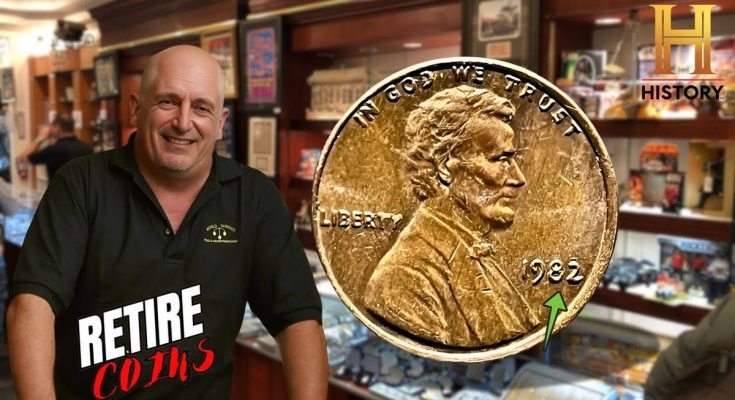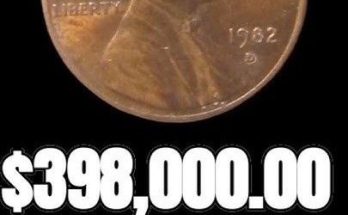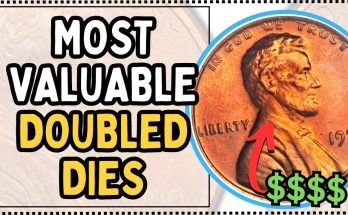The humble penny, America’s lowest-denomination coin, is often overlooked and treated as little more than pocket change. Yet, within the millions of one-cent coins that circulate every day, a few stand out as undisputed titans of value. These rare U.S. pennies—minting anomalies, key-date rarities, and famous error coins—are the “Holy Grail” for numismatists and represent some of the most significant hidden treasures in American coinage, with values soaring from hundreds to well over a million dollars.
The stories behind these small copper (or sometimes steel) discs are tales of historical circumstance, government mandates, and unforgettable factory errors.
The Kings of Error: The Legendary Wartime Cents
The most valuable pennies owe their existence to one of the most tumultuous periods in American history: World War II. In 1943, due to a critical shortage of copper needed for the war effort, the U.S. Mint switched the penny’s composition from its traditional 95% copper alloy to zinc-coated steel. This created the distinctive, silver-colored 1943 Steel Cent.
However, the genuine treasure lies in the handful of coins that were not made of steel: the 1943 Bronze/Copper Lincoln Cent. A tiny number of copper planchets (blank coin discs) were accidentally left in the presses and struck with the 1943 die. Only about 20 of the 1943 copper cents are known to exist across all mints, with one example selling for a staggering $1.7 million, making it arguably the most valuable single-cent coin in existence.
The opposite error occurred the following year, which is nearly as rare. In 1944, when the Mint returned to a modified copper composition (made from spent shell casings), a few leftover steel planchets from 1943 were mistakenly struck with the 1944 date. The 1944 Steel Lincoln Cent is another magnificent error, with known examples fetching values well into the hundreds of thousands of dollars.
Key Dates: Rarity by Design and Mintage
Beyond the dramatic errors, certain pennies became instantly valuable due to their low production numbers or public controversy, making them “key dates” in the Lincoln Cent series (which began in 1909).
The most famous of these is the 1909-S VDB Lincoln Cent. This coin marked the centennial of Abraham Lincoln’s birth and the debut of the new Lincoln design, featuring the initials of designer Victor David Brenner (VDB) prominently on the reverse. Public outcry over the large initials led to their removal shortly after release. Only 484,000 of the 1909-S VDB cents were minted in San Francisco before the change, cementing its status as an iconic rarity. Even in worn condition, this coin is worth hundreds of dollars, with uncirculated examples reaching five figures.
Other key-date rarities include the 1914-D Lincoln Cent, which had a low mintage of just over a million pieces, and the error-variety 1922 “Plain” Lincoln Cent. The latter is the result of a damaged Denver (D) mint die being polished so heavily that the mintmark was obliterated, resulting in a rare coin that appears to have been struck in Philadelphia (no mintmark), but exhibits the characteristics of a Denver strike.
Doubled Dies and Modern Transitional Finds
Minting errors, known as “varieties” when they affect a whole batch, provide some of the most spectacular finds. The 1955 Doubled Die Lincoln Cent is one of the most recognizable, featuring a dramatic, offset double image on the date and the inscription LIBERTY due to a misalignment of the coining die. This coin, which was initially released into circulation, can be worth thousands of dollars. A less visible but exponentially more valuable example is the rare 1969-S Doubled Die Obverse, a high-grade example of which has sold for well over $100,000.
Another critical period was 1982, when the U.S. Mint, again facing rising metal costs, transitioned the cent’s composition from the traditional 3.11-gram copper alloy to the modern 2.5-gram copper-plated zinc. This transition created seven different varieties of the 1982 cent (due to different mintmarks, dates, and compositions). The most sought-after variety is the extremely rare 1982-D Small Date Copper Cent, an accidental holdover from the previous composition, which is authenticated by its heavy, 3.11-gram weight.
For the diligent collector, the lesson is clear: while most of the billions of pennies in circulation are worth just one cent, the potential for a hidden fortune rests on rarity, condition, and a critical error or design flaw. Whether you are searching for a high-grade 1909-S VDB or hoping to find a transitional error, the Most Valuable U.S. Penny Coins prove that a tiny piece of history can carry monumental value.



